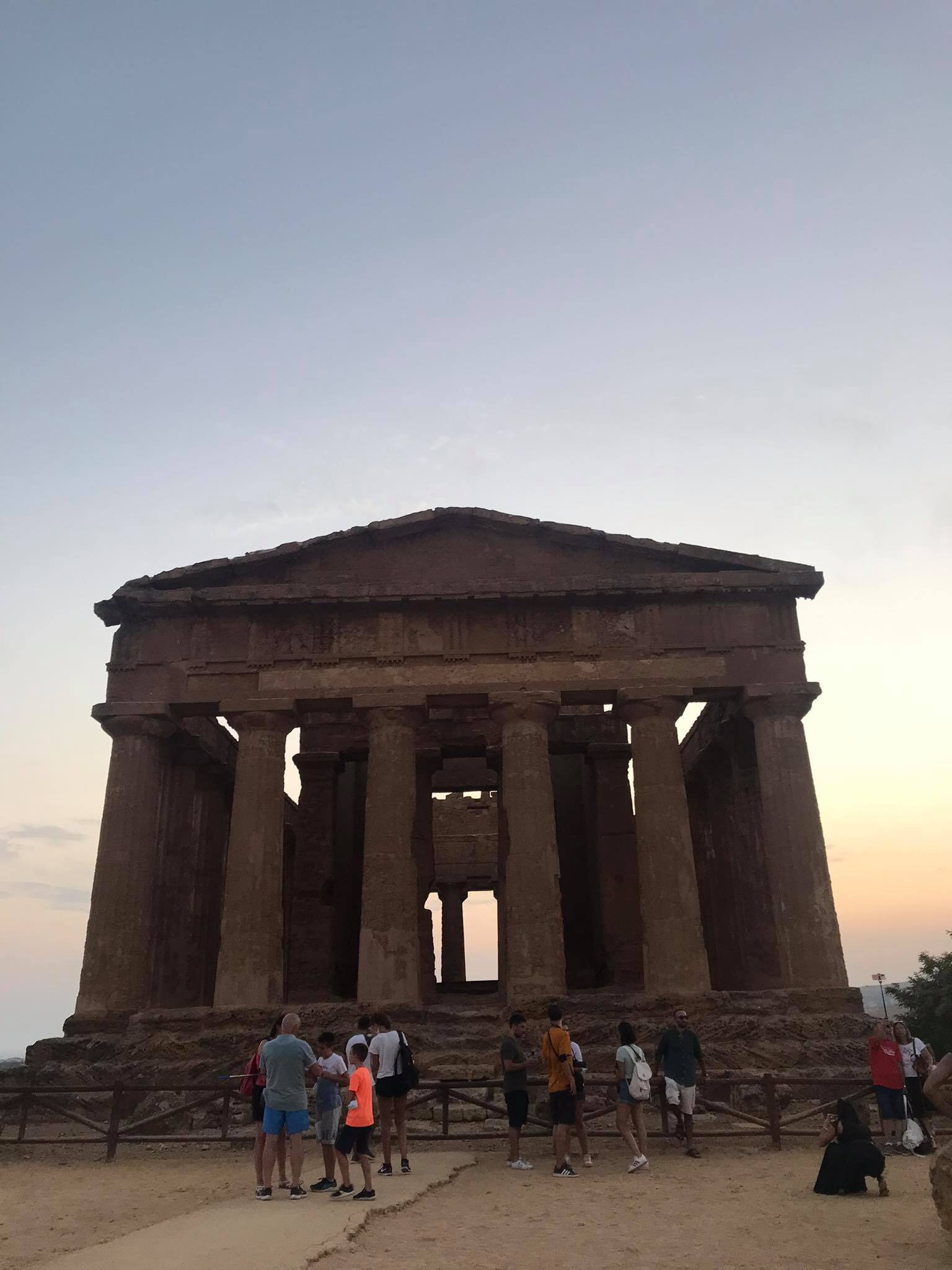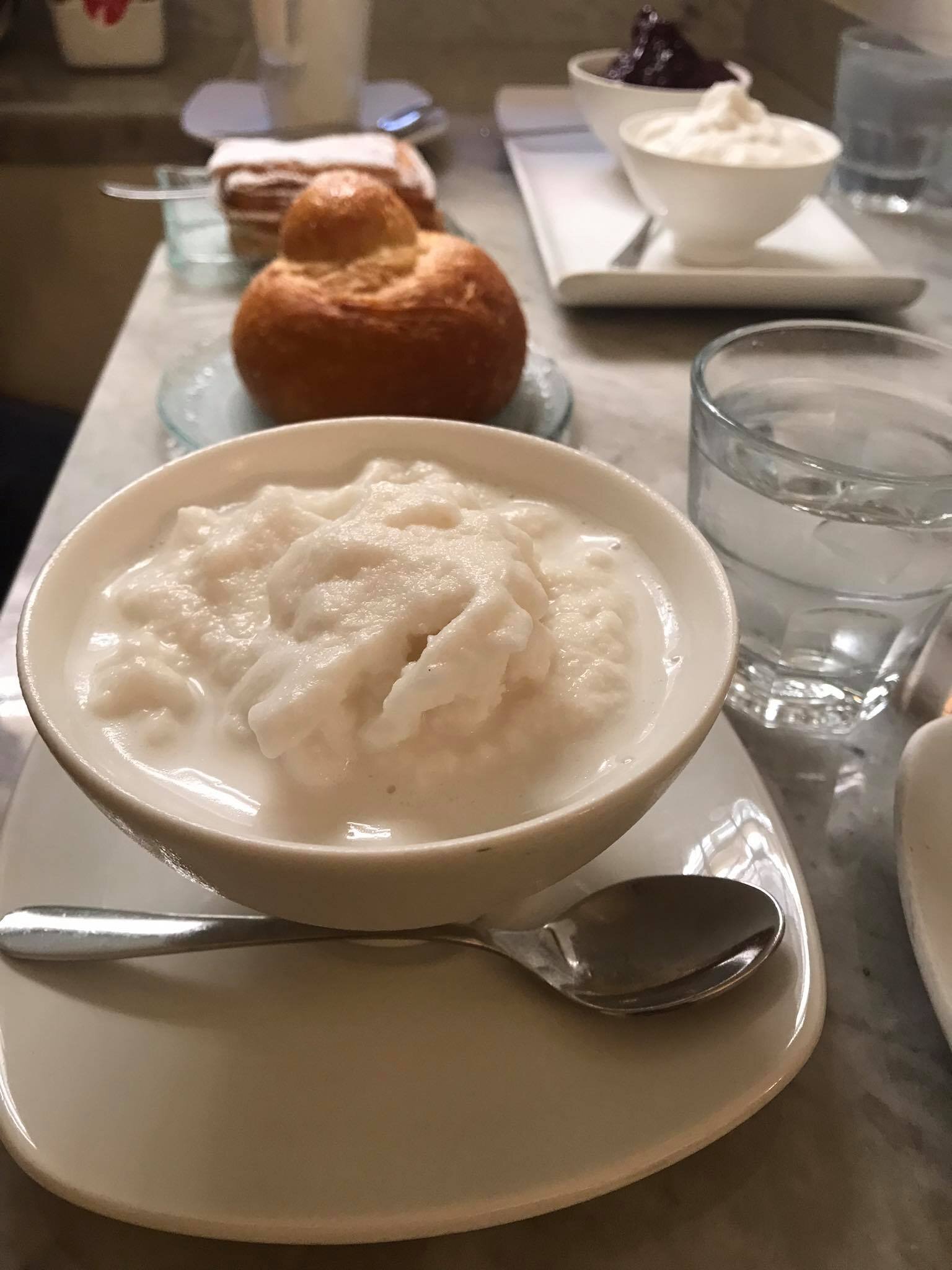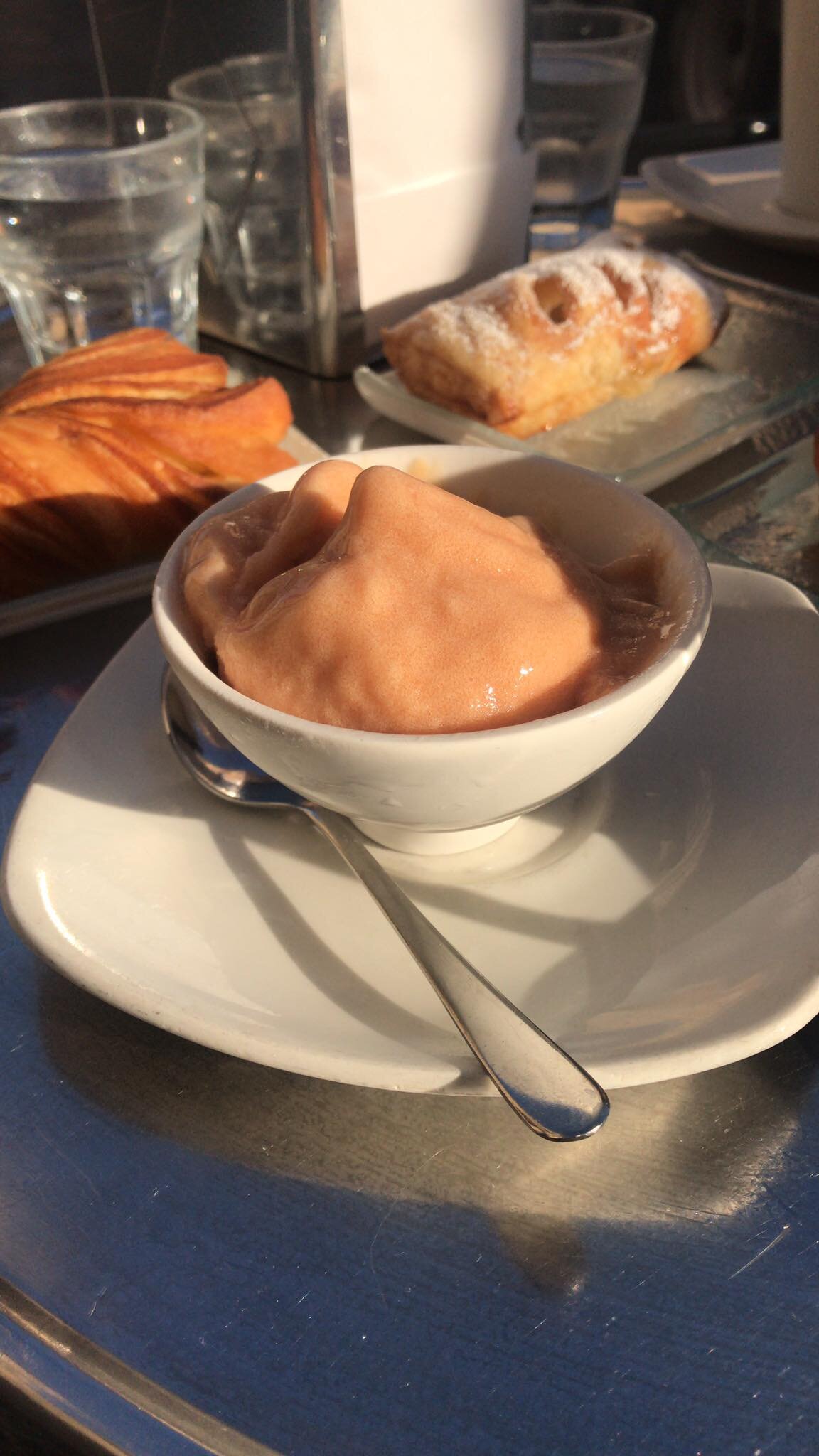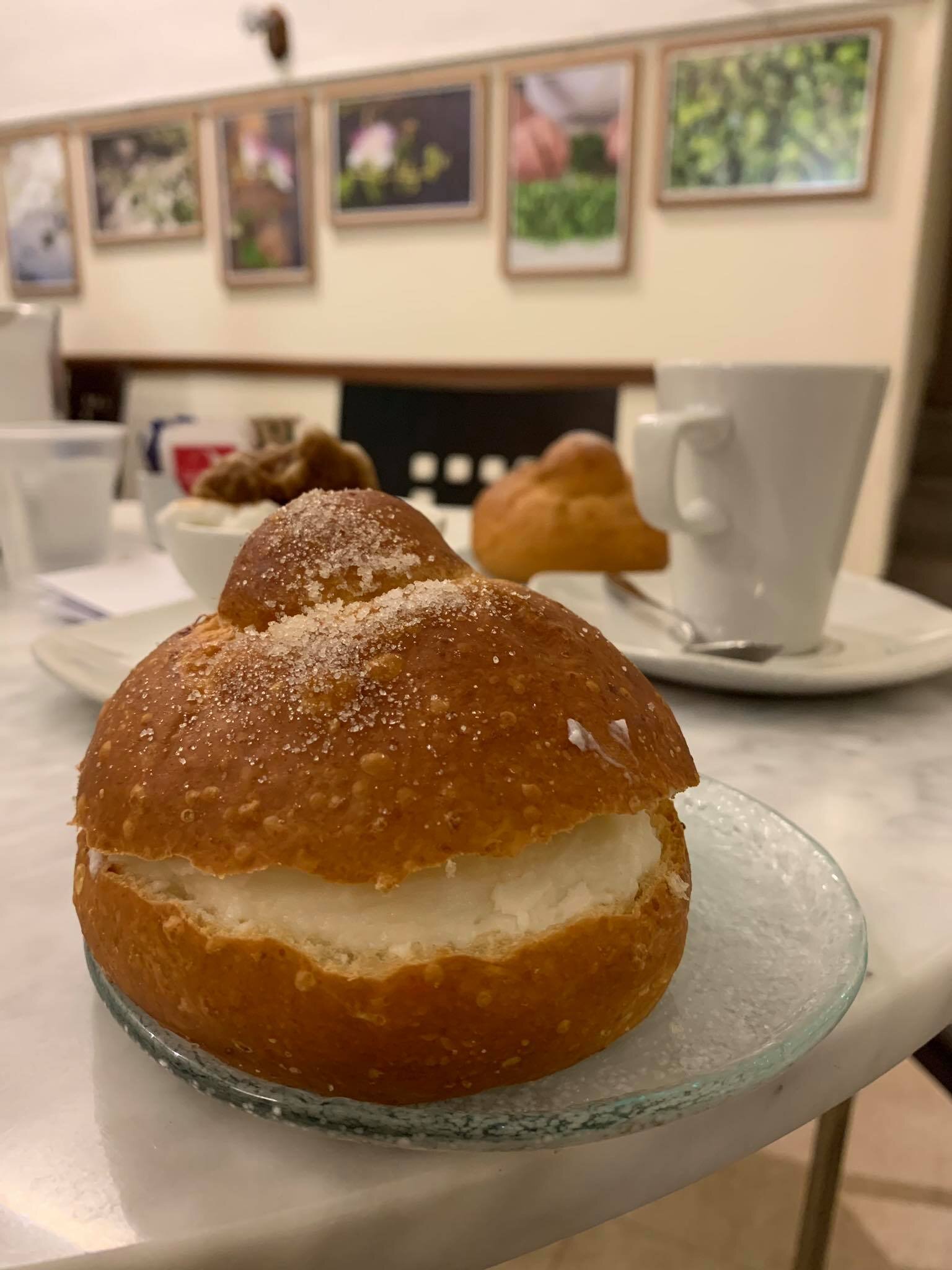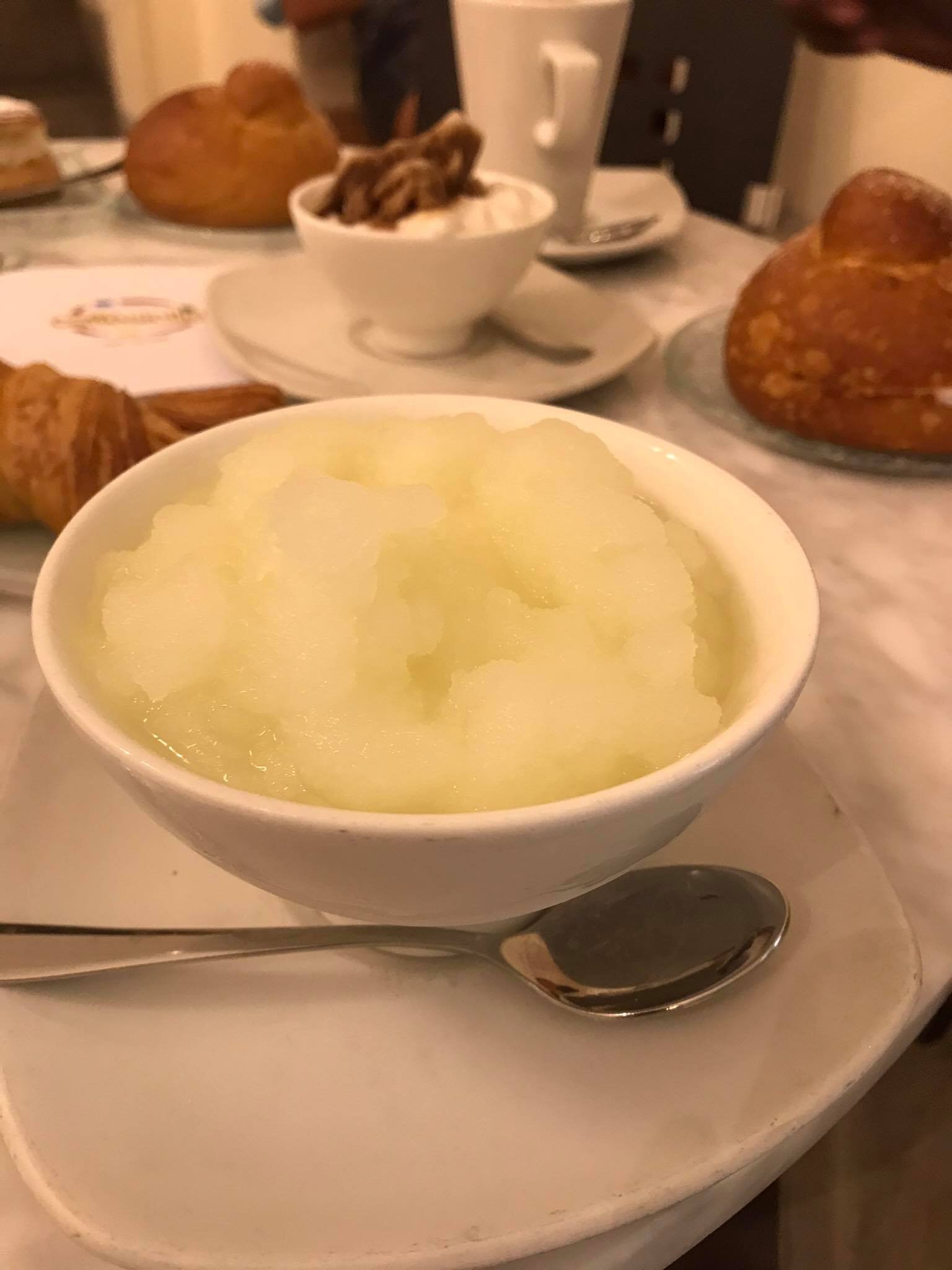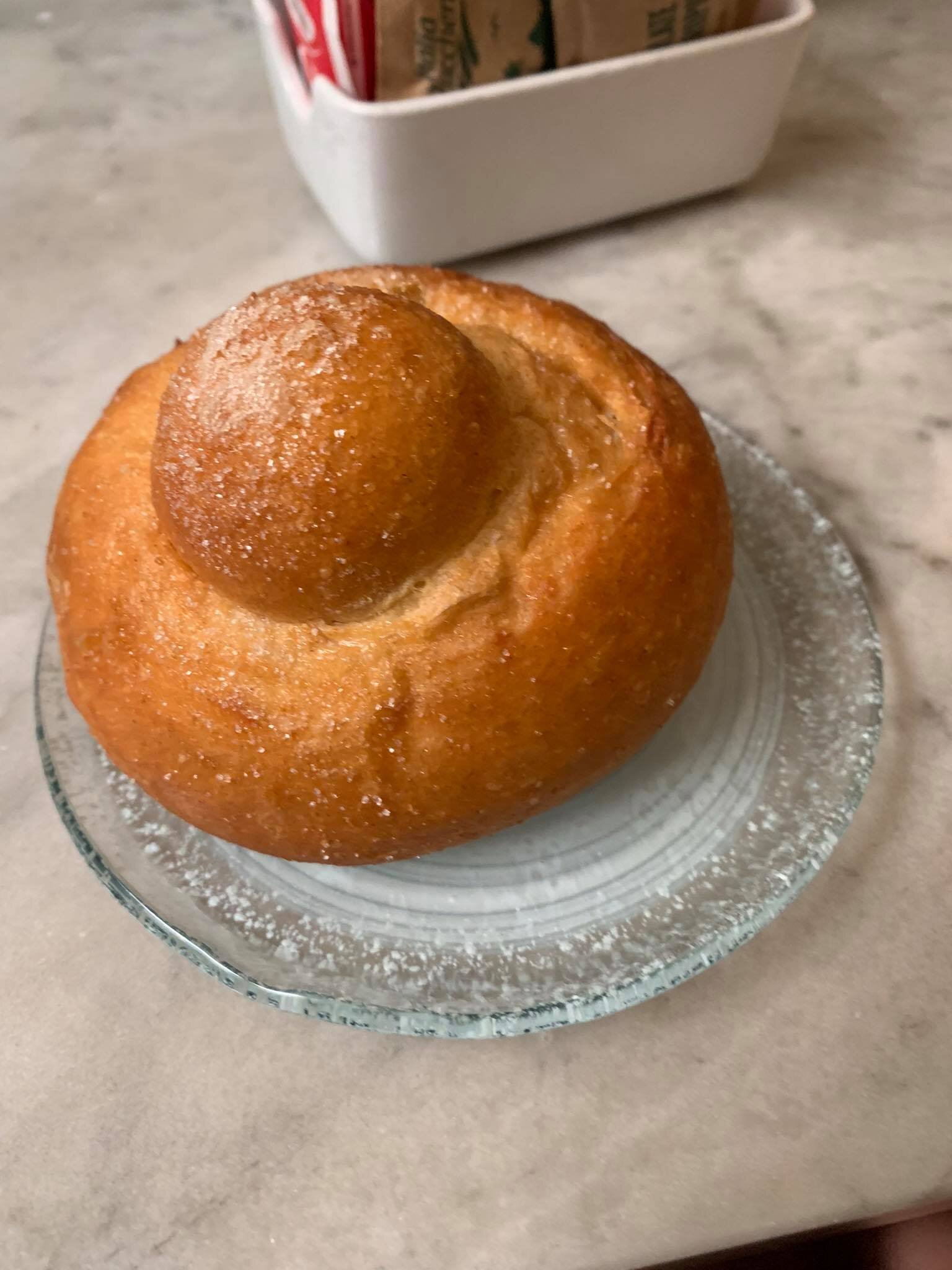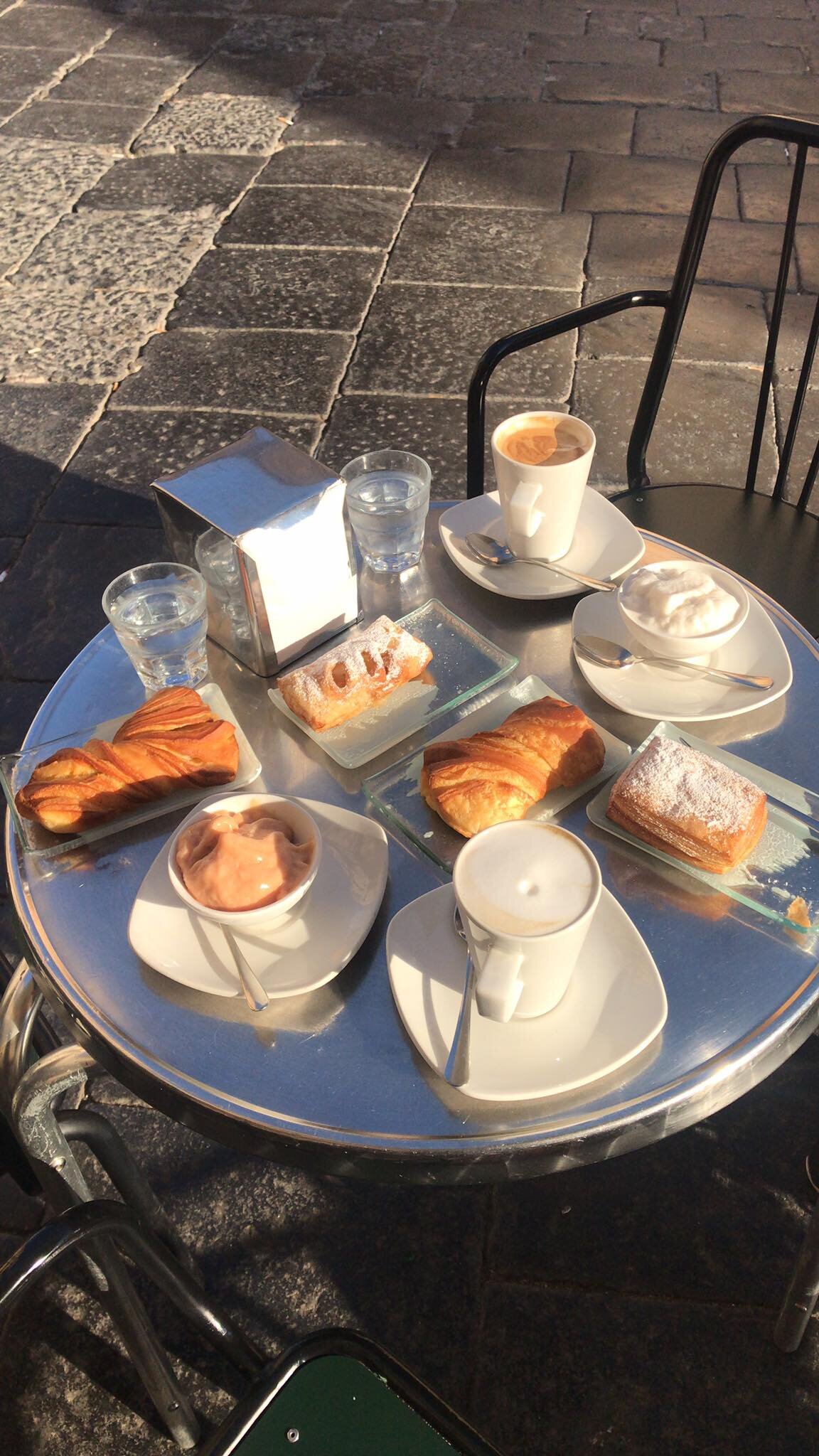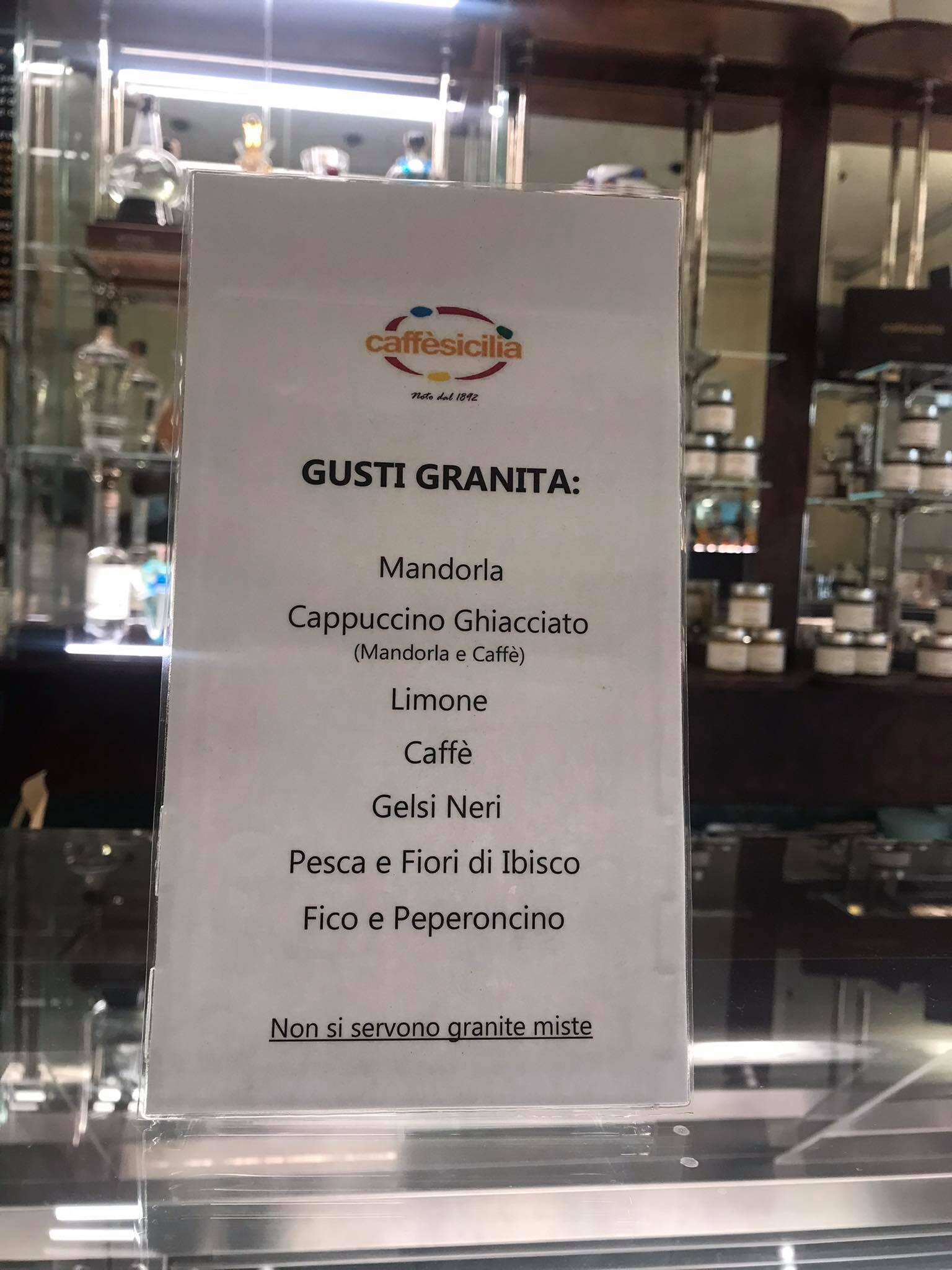Vacation in Sicily - 2021
After a month long hiatus from blogging I’m back in Rome and feeling rested and re-charged. In true September back-to-school-style, I’ve filled up a fresh new notebook with recipe ideas and to-do-lists, and am eager to get back in the kitchen. But first: my trip to Sicily.
You name it, Sicily – the largest island in the Mediterranean and one of Italy’s 20 regions – has it. It boasts beaches with sparkling, turquoise blue water, not to mention mountains and stunning nature reserves. It brims with history – illustrated by its impeccably preserved ancient Greek temples – architecture, countless museums and cathedrals, and a whopping seven UNESCO World Heritage Sites. Sicily even has its own volcano, home to still very active Mount Etna.
And of course, the food. You guys: the food.
La cucina siciliana marches to the beat of its own drum; is a unique and wonderful patchwork of a cuisine that is embroidered with Greek, Spanish, French and Arab influences, traces of the civilizations that occupied the island before it became part of Italy in 1861 under Giuseppe Garibaldi. Ingredients like cloves, cinnamon, saffron, couscous, apricots, and raisins take center stage in many Sicilian dishes. Sicilian cuisine also draws heavily upon its rich culinary patrimony, featuring the pistachios and almonds that grow on the island, stellar ricotta di pecora, or sheep’s milk ricotta, and the vast array of fish and shellfish it has at its disposal, making excellent use of everything from sea urchin to swordfish to prawns to tuna.
Last month I spent 12 days exploring the cities of Palermo, Agrigento, Ragusa, and Noto, a trip that I felt particularly grateful for given that travel has become so difficult since the start of the pandemic (note to self: never take traveling for granted again). Armed with my European vaccination pass and lots of SPF 50 sunscreen, I finally set off for a long overdue road trip through Sicilia. Read on for tips, suggestions, and most importantly of all: what we ate!
PALERMO
The capital city of Sicily, Palermo also happens to be the the unofficial home of Sicilian street food, or cibo da strada. My very favorite street food item food are arancine — tennis ball sized spheres of risotto stuffed with everything from meat ragù to pistachio pesto to eggplant and tomatoes, the choice is yours — whcih are breaded, fried, and served still warm, a crispy, melty, carb-y globe of deliciousness. You’ll also find pane e panelle (chickpea flour fritters served piping hot on a sesame roll, or by themselves, served in a paper cone), and a fluffy, rectangular pizza topped with anchovies, onions, tomatoes, caciocavallo cheese, and oregano known as sfincione. I confirm that all of them make for a delicious lunch or snack when strolling through sunny, blue-skied Palermo.
Sicilians also have a long history of eating offal, a tradition that started with the island’s medieval Jewish and Muslim communities who didn’t consume pork. Palermo’s open air markets, Mercato del Capo and Mercato Ballarò are just two places that serve up stigghiole, or grilled skewers of sheep or goat intestine that is cooked until charred and crisp (pictured below), as well as pani ca meusa, a sandwich made with fried veal spleen sprinkled with lemon juice and salt. The markets also sell vegetables, fruit, meat, fish, shellfish, fresh sea urchins, cheese, herbs, spices, and other Sicilian specialties. Another must visit? Vucciria, a square packed with vendors selling every kind of street food you could imagine, complete with drinks and music all day, every day (though the party tends to pick up at night).
A visit to Palermo would not be complete without a trip to the famous Pasticceria Capello, which is known for its Torta Setteveli, a cake made with 7 layers of chocolate crunch, biscuit, hazelnut cream, dark chocolate mousse, and a shiny chocolate glaze. Yes, this is a completely acceptable breakfast item and yes, I did enjoy a slice alongside a cappuccino. Swoon.
A few more restaurant recommendations for anyone visiting Palermo: 'Nni Franco U'Vastiddaru for pane e panelle, and other fried Sicilian delights; La Nicchia for aperitivo and a superb wine collection; Kepalle for arancine; Osteria Mangia e Bevi for a low-key dinner, A'Cuncuma for a fancier meal (our dinner here was hands down one of the best we had in Sicily).
Tourist attractions: Palazzo dei Normanni, or the former Royal Palace of Palermo; La cattedrale di Monreale, a truly stunning church decorated wall to wall with with gold mosaics; Il Museo Archeologico Regionale di Palermo, ie the Archeological Museum of Palermo, and L’Orto Botanico e Villa Giulia, a botanical garden filled with lemon and orange trees, fountains, and statues.
AGRIGENTO
Agrigento was one of the leading cities of Magna Grecia during ancient Greek occupation of the island, evidenced by the presence of the stunning Valle dei Templi. La Valle dei Templi (Valley of the Temples) comprises a large area on the south side of Agrigento with seven monumental Greek temples constructed during 6th and 5th centuries BC. They constitute some of the largest and best-preserved ancient Greek buildings outside of Greece itself, and are a UNESCO World Heritage Site.
There is Temple of Concordia, built in the 5th century BC and one of the best preserved temples in the Valley. There’s the Temple of Juno, and the Temple of Hephaestus, both built in the 5th century BC, as well as the Temple of Heracles, which was mostly destroyed by an earthquake and today consists of only eight columns. There’s the Temple of Olympian Zeus, built in 480 BC to celebrate the city-state's victory over Carthage, the Temple of Castor and Pollux (consisting of only four columns), and the Temple of Asclepius, visited by ancient Greeks seeking cures for illness. Some are better preserved than others, but all of them were absolutely stunning, especially at dusk.
Tip: If you’re visiting Agrigento during warmer months, I would recommend visiting the temples either early in the morning or at dusk as there is little cover and the heat can become pretty intense. I would also recommend doing a guided tour to get the most out of the site. Finally, you will need a vaccination card to enter la Valle dei templi; if you don’t have one, you are required to get a rapid covid test, which can be done at the center set up entrance of the site.
La Scala dei Turchi
La Scala dei Turchi is a rocky cliff on the coast of Realmonte, in the provice of Agrigento. It is made up of marl — an unconsolidated sedimentary rock or soil consisting of clay and lime, according to Google — which gives it its shockingly white hue. The snow-colored cliffs contrast beautifully with the sapphire waters below, and all together its a breathtaking sight. The cliffs lie between two beaches, i.e the perfect place to spend the rest of your day. Tip: Water shoes (the ones with a little grip) are ideal for making your way up the cliffs. Bonus: the waters near la Scala are full of natural clay, which is great for your skin — just slather it on, let it dry, rinse off, and voila’! Baby smooth skin.
A few more recommendations if you’re visiting Agrigento: The Giallonardo and Sabbia d’oro stabilimenti (beach clubs) were both excellent, with crystal clear water and decently priced lounge chairs and umbrellas for the day. The restaurant Il Re di Girgenti was one of our very favorites, with a great view of the Valle dei Templi (request a table out on the terrace) and Osteria Expanificio was also excellent. Finally, Bar Sajeva for their granita al pistacchio, brioche con gelato, and cannoli fritti — to die for!
RAGUSA
Ragusa has a roughly 3000-year history, but the majority of the city was reconstructed in the early 1700s following and earthquake in 1693. It was rebuilt in two parts, or rather Ragusa Superiore — meant for the the nobility and upper class of the time, with the city’s cathedral — and Ragusa Inferiore (more commonly called Ragusa Ibla). Ragusa Ibla tends to attract more tourists and is slightly more picturesque, with Medieval-style streets decked out with Baroque decorative details. Ragusa as a whole however is so beautiful that it was named a UNESCO World Heritage Site.
We saw beautiful churches in Ragusa, and even a castle; we ate and drank well. But the highlight of Ragusa, the absolute best part of our stay was Pasticceria Iudice.
First things first: one cannot talk about Sicily without talking about cannoli, the most famous sweet from the island. I took on the formidable task of sampling as many cannoli as I could during my trip, curious to see how they ranked from pasticceria to pasticceria. There were the cannoli from Pasticceria Sajeva in Agrigento, made with a sweeter ricotta filling and decorated with slices of candied orange; there were those from Caffè Sicilia in Noto, made with barely sweetened ricotta and shells that were on the sturdier, crunchier side. Cannolia in the town of Scicli served their cannoli still warm, shells freshly fried and with a near over-the-top quantity of ricotta filling.
They were all wonderful. But the cannoli from Pasticceria Iudice were hands down the Best Cannoli I Have Ever Eaten. Pasticceria Iudice is a small, family-owned bakery on a non-descript piazza. The matriarch of the family herself works behind the counter, and handed me my cannolo with a knowing smile – something along the lines of you have no idea what you’re in for. Indeed: the cannolo shell was a burnished shade of golden, delicate but substantial enough to stand up to the filling, and shattered delightfully at my first bite. The ricotta within – filled to order, to avoid any possibility of a soggy cannolo – was rich, smooth, and Goldilocks-style, just the right amount of sweet, dotted with rounds of sunny candied orange and earthy pistachios. A shower of powdered sugar over the top made them as beautiful to look at as they were divine to eat. The best part? A cannolo from Iudice is light as air, frying be damned, which meant I could easily eat a second one after my first. Photos below!
P.S: Cannoli are an acceptable breakfast item in Sicily, and go wonderfully alongside your morning coffee.
A few more suggestions if you’re visiting Ragusa: if you’re a fan of artisanal beer, be sure to visit Birreria Yblon. Make sure you try scacce, a sort of stuffed, folded pizza that is a specialty of Ragusa as well. In terms of tourist attractions, there’s Il Cattedrale di San Giovanni and Il Duomo di San Giorgio for some beautiful cathedrals, and the historic castle Castello Donnafugata, or the former summer residence of the noble Arrezzo family. Finally, the Belvedere della Chiesa di Santa Lucia provides beautiful views of the city.
NOTO
During my nearly two weeks on the island I started my mornings with granita e brioche siciliana, a typical Sicilian breakfast. Granita, a slightly more crystalline version of sorbet, is an icy, refreshing treat made in a variety of flavors like lemon, strawberry, coffee, almond, or pistachio. Upon request, it can be served topped with freshly whipped cream, an addition that is by all means optional but pretty much mandatory in my book. The sweet, buttery brioche served alongside is round and fluffy with a distinctive knot of dough at the top, called il tuppo. While this may seem like an odd pairing for breakfast, trust me: a dish of ice-cold granita and a feather light brioche make complete sense on a sweltering Sicilian morning. Sicilian brioche can also be unabashedly, unapologetically stuffed with an abundance of gelato, if you so desire, a sort of Italian ice cream sandwich. Breakfast is after all the most important meal of the day, right?
If you have Netflix, it’s very likely that you’ve seen Chef’s Table, a sort of docuseries that follows everything from Michelin starred chefs to street food royalty, exploring their individual philosophies and approaches to cooking. One such episode focuses on Corrado Assenza, the owner of Caffe’ Sicilia, a renowned bakery that makes legendary granita, brioche, and other Sicilian specialties (including the above-mentioned cannolo). Caffe’ Sicilia is conveniently located in Noto, and was where we had our best Sicilian breakfasts in the nearly two weeks on the island, everything from more traditional lemon or almond granita to more creative fig and hot pepper or peach and hibiscus granita. The brioche were out of this world — especially when filled with ricotta cream! — and so were the pastries, particularly a buttery pastry treccia (braid) filled with almonds and orange . Even the coffee was exceptional.
A few more tips if you’re visiting Noto: Note that Noto is extremely popular in the summer, and is packed with visitors. Therefore prices for hotels, bed & breakfasts, and even lounge chairs/umbrellas at the beach clubs are extremely pricey (we were charged EUR 50 a person for two lounge chairs and an umbrella at a beach nearby Noto). Restaurants in August are also booked up, so make sure you book your meals at least a week in advance. We didn’t manage to have many meals out in Noto for this reason, but did manage to drive a bit outside Noto to Marzamemmi, where we had a wonderful meal at a Ristorante Vidi in Castello Tafuri, with a beautiful view of the sea. The food was spectacular, as was the service.
On my final day in Sicilia, I tucked jars of jam from Caffe’ Sicilia into my suitcase, made space for a package of almond cookies from Pasticceria Iudice, and carefully wrapped up an arancina to bring back with me to Rome, an attempt to bring Sicily with me even after the vacation ended. And now that I’m back home? I’ll travel to my favorite island the best way I know how: through my kitchen, cooking and baking Sicilian classics until I can visit in person again. Stay tuned for some Sicilian recipes on the blog, starting with sfincione.
Want any tips or suggestions about Sicily, or have any questions? Feel free to send me an email at pancakesbiscottiblog@gmail.com.



































